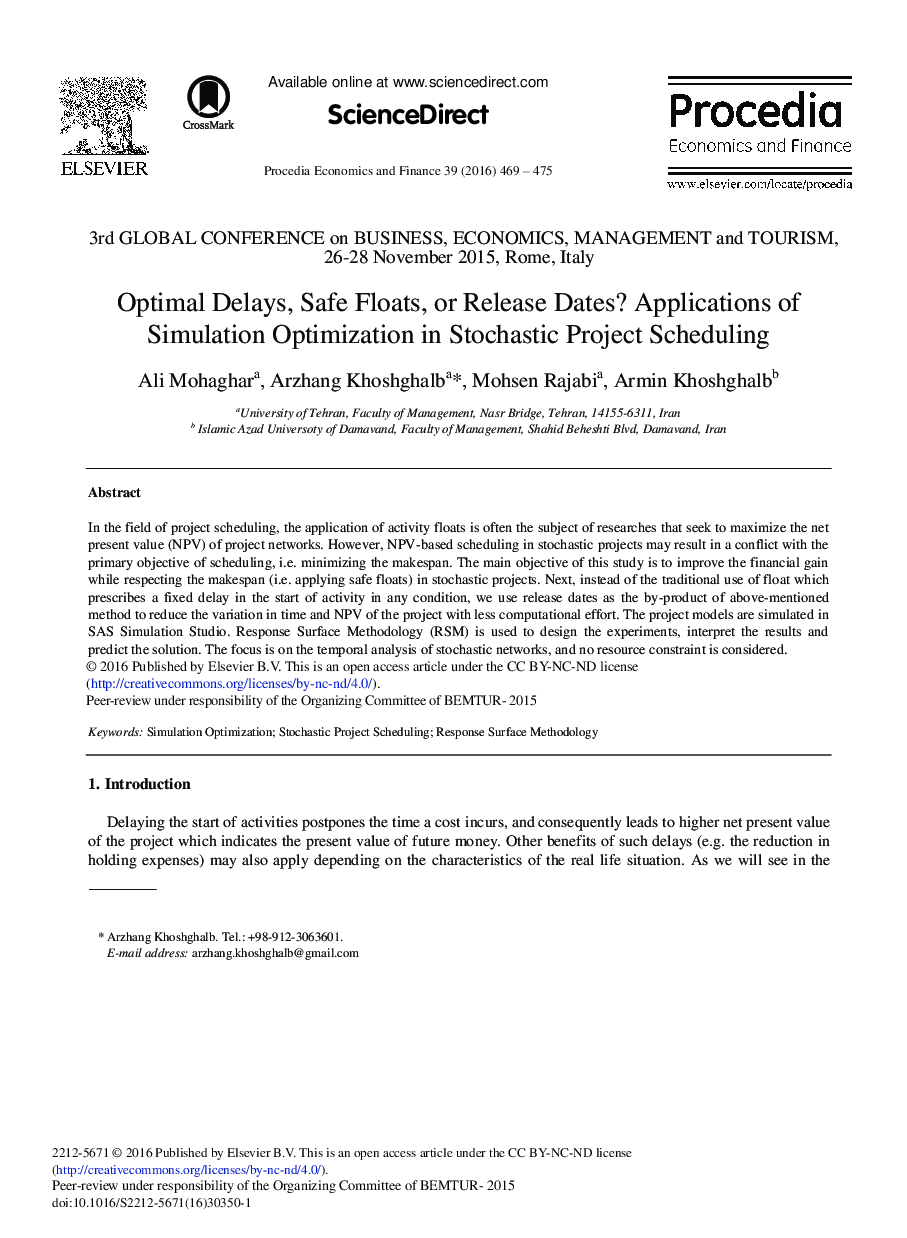| Article ID | Journal | Published Year | Pages | File Type |
|---|---|---|---|---|
| 980544 | Procedia Economics and Finance | 2016 | 7 Pages |
In the field of project scheduling, the application of activity floats is often the subject of researches that seek to maximize the net present value (NPV) of project networks. However, NPV-based scheduling in stochastic projects may result in a conflict with the primary objective of scheduling, i.e. minimizing the makespan. The main objective of this study is to improve the financial gain while respecting the makespan (i.e. applying safe floats) in stochastic projects. Next, instead of the traditional use of float which prescribes a fixed delay in the start of activity in any condition, we use release dates as the by-product of above-mentioned method to reduce the variation in time and NPV of the project with less computational effort. The project models are simulated in SAS Simulation Studio. Response Surface Methodology (RSM) is used to design the experiments, interpret the results and predict the solution. The focus is on the temporal analysis of stochastic networks, and no resource constraint is considered.
